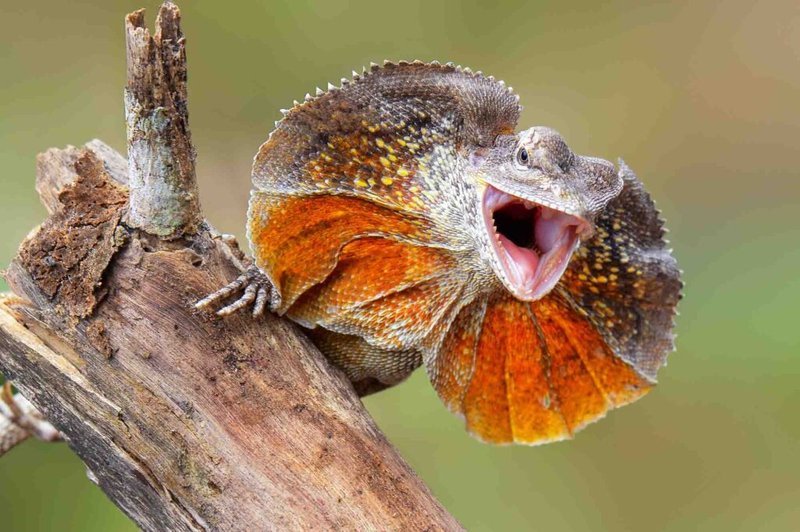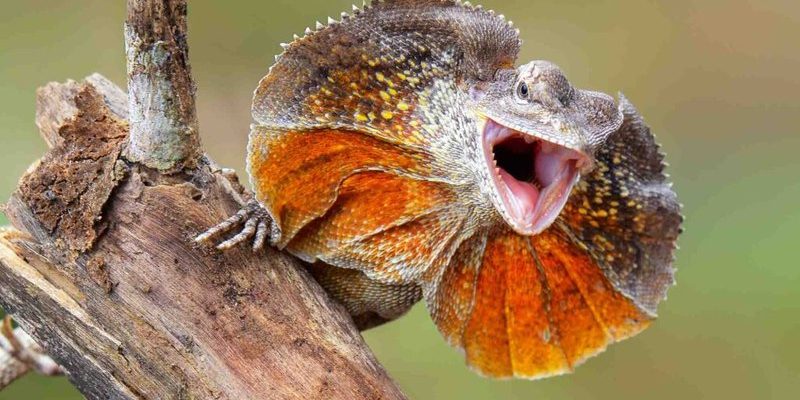
The frilled lizard isn’t just about that flashy neck frill—its hunting techniques and dietary choices are equally impressive. Imagine a small creature that can blend into its surroundings, waiting patiently for just the right moment to strike. That’s the frilled lizard in action! Understanding their diet and hunting strategies not only gives us insight into their lives but also showcases the delicate balance of ecosystems in which they thrive.
What Do Frilled Lizards Eat?
Frilled lizards are primarily insectivores, meaning their diet mainly consists of insects. However, they don’t just munch on any insects; they prefer a variety of them. You might wonder, “What kinds of bugs are we talking about?” Well, here’s a quick list of their favorites:
- Ants
- Beetles
- Grasshoppers
- Caterpillars
- Termites
These lizards can consume a wide range of prey, primarily due to their sharp teeth and agile tongues. Their hunting is quite an impressive ballet of patience and speed. They often hunt alone, using their camouflage to blend in with the trees and bushes of their tropical environments. When an unsuspecting insect wanders too close, the frilled lizard quickly darts out its tongue to capture the meal. This is no casual snack; it’s a calculated strike!
Hunting Techniques: A Two-Step Approach
When it comes to hunting, frilled lizards have a few tricks up their sleeves. Their approach can be broken down into two main techniques: ambush and pursuit.
Ambush is their primary strategy. Frilled lizards are masters of disguise, using their skin patterns to blend seamlessly into their surroundings. Think of them as ninjas of the reptile world. They often sit motionless for long periods, waiting for insects to unknowingly wander into their reach. When the moment is right, they spring into action with lightning speed.
In contrast, if they miss their chance or if their prey escapes, they may switch to pursuit mode. This technique involves chasing down their target. While they aren’t the fastest creatures around, they’ve got agility on their side. Quick twists and turns help them navigate through the underbrush, ensuring they can still catch those quick-flying insects.
The Role of the Frill: More Than Just Looks
You might be curious about the frill itself. Is it just for show? Well, not quite. The frill plays a vital role in both hunting and predator defense. When the lizard feels threatened, it can extend its frill to make itself look larger and more intimidating. This display often sends predators running in the opposite direction—who wants to mess with a creature that looks like it could take you on a royal duel?
Additionally, during hunting, the frill can help with distraction. When a frilled lizard approaches its prey, the sudden flare of the frill can catch the bug off guard, giving the lizard a critical edge during the ambush. It’s a clever tactic that’s all about survival, mixing aesthetics with adaptive behavior.
Geographical Influence on Diet
Frilled lizards inhabit various environments ranging from woodlands to savannas, which can affect their diet. In some areas, they might have more access to specific bugs than in others. For example, in densely wooded regions, they might feast on beetles and caterpillars, while in more arid areas, ants and grasshoppers could be more abundant.
This difference in food availability requires the frilled lizard to adapt its hunting strategies. If a particular bug becomes scarce, these lizards can shift their focus to other available food sources, showcasing their adaptability. It’s nature’s way of ensuring survival, and these lizards do it remarkably well.
Seasonal Changes and Diet Variability
As seasons change, so does the frilled lizard’s diet. During the wet season, insects are plentiful, making it easier for these lizards to snack. However, come dry season, finding food can be a challenge. In such times, frilled lizards may need to travel further or expend more energy to hunt.
Interestingly, they might also alter their hunting times. Instead of just basking in the sun, they may become more active during the cooler parts of the day when insects are more likely to be moving about. This adaptability helps ensure they get enough nutrition no matter the weather conditions.
In summary, the diet and hunting strategies of the frilled lizard are quite remarkable. From their insectivorous diet to their unique hunting techniques, these lizards are well-equipped to thrive in their environments. Their ability to adapt, whether it’s through changing their hunting times or shifting their focus based on food availability, shows their resilience. Understanding these aspects not only highlights the frilled lizard’s cleverness but also the intricacies of nature.
So next time you hear about this captivating reptile, remember that its frill isn’t just for show—it’s a key part of its survival toolkit. The frilled lizard is a true testament to the wonders of evolution, blending beauty with practicality in a way that leaves us in awe.

